- Home
- Isaac Asimov
Utopia c-3
Utopia c-3 Read online
Utopia
( Caliban - 3 )
Isaac Asimov
Roger Macbride Allen
The Caliban Trilogy is a searing examination of Asimov’s Three Laws of Robotics, a challenge welcomed and sanctioned by Isaac Asimov, the late beloved genius of science fiction, and written with his cooperation by one of today’s hottest talents, Roger MacBride Allen, New York Times bestselling author of Star Wars: Ambush at Corella.
Isaac Asimov, Roger MacBride Allen
Utopia
The First Law states:
A robot may not injure a human being, or, through inaction, allow a human being to come to harm.
The Second Law states:
A robot must obey the orders given it by human beings except where such orders would conflict with the First Law.
The Third Law states:
A robot must protect its own existence as long as such protection does not conflict with the First or Second Law.
To My Brother Chris,
His Wife Edie,
My Sister Connie,
And Her Husband Jim.
Author’s Note
I would like to thank all the people involved with this book, and with this trilogy. It has been a long and complicated undertaking. Now, at long last, it is complete.
These three books would have been absolutely impossible if not for the prodigious literary output of the late Isaac Asimov, and if not for the prodigious popularity of his work. He is and will be greatly missed, and we are all in his debt. It has been an honor and a privilege to explore the ideas and the worlds he created.
Thanks as well to the editors who have labored over Caliban, Inferno, and Utopia. David Harris, John Betancourt, Leigh Grossman, and Keith R. A. DeCandido all worked to improve these books—and all succeeded. Thanks also to Susan Allison, Ginjer Buchanan, and Laura Anne Oilman of Ace Books, to Peter Heck, and to Byron Preiss, for their labors on my behalf.
And, of course, thanks as well to Eleanore Maury Fox. I hadn’t even met her when I started work on this trilogy. Now she is my wife. This is the spot where authors usually talk about the love, affection, and patience of their long-suffering spouses, and Eleanore certainly deserves thanks on all those counts. But I also got something else: very hard-edged, straightforward, professional editorial advice. It helped a lot.
I now come to my sister Constance Witte, my brother Chris Allen, my brother-in-law Jim Witte, and my sister-in-law Edith Allen. This last book of the trilogy is dedicated to them, as the first one was dedicated to their children. (Except for one, and I’ll come to her in a minute.) Connie, Chris, Jim and Edie: thank you, for a list of things that would be longer than this book. Thanks as well to my parents, Tom and Scottie Allen, and to my mother-in-law Elizabeth Maury, to my father-in-law David Fox, and to my brother-in-law, Carl Fox. The family just keeps getting bigger, and consequently I just keep getting luckier.
Speaking of families getting bigger, the newest member of it hadn’t quite arrived when I dedicated Caliban to my nieces and nephews. She deserves to be on the list. In closing, therefore, I would like amend that dedication to include Anna Patrice Allen. Welcome aboard, Anna.
Roger MacBride Allen
Brasilia. Brazil
November, 1995
The new laws of robotics
I. A Robot May Not Injure A Human Being.
II. A Robot Must Cooperate with Human Beings Except Where Such Cooperation Would Conflict with the First Law.
III. A Robot Must Protect Its Own Existence, As Long As Such Protection Does Not Conflict with the First Law.
IV. A Robot May Do Anything It Likes, Except Where Such Action Would Violate the First, Second, or Third Laws.
The original laws of robotics
I. A Robot May Not Injure a Human Being, or, Through Inaction, Allow a Human Being to Come to Harm.
II. A Robot Must Obey the Orders Given It By Human Beings Except Where Such Orders Would Conflict With the First Law.
III. A Robot Must Protect Its Own Existence As Long As Such Protection Does Not Interfere With the First or Second Law.
THE SPACER-SETTLER STRUGGLE was at its beginning, and at its end, an ideological contest. Indeed, to take a page from primitive studies, it might more accurately be termed a theological battle, for both sides clung to their positions more out of faith, fear, and tradition, rather than through any carefully reasoned marshaling of the facts.
Always, whether acknowledged or not, there was one issue at the center of every confrontation between the two sides: robots. One side regarded them as the ultimate good, while the other saw them as the ultimate evil. Spacers were the descendants of men and women who had fled semi-mythical Earth with their robots when robots were banned there. Exiled from Earth, they traveled in crude starships on the first wave of colonization from earth. With the aid of their robots, the Spacers terraformed fifty worlds and created a culture of great beauty and refinement, where all unpleasant tasks were left to the robots. Ultimately, virtually all work was left to the robots. Having colonized fifty planets, the Spacers called a halt, and set themselves no other task than enjoying the fruits of their robots’ labor.
The Settlers were the descendants of those who stayed behind on Earth. Their ancestors lived in great underground Cities, built to be safe from atomic attack. It is beyond doubt that this way of life induced a certain xenophobia into Settler culture. That xenophobia long survived the threat of atomic war, and came to be directed against the smug Spacers—and their robots.
It was fear that caused Earth to cast out robots in the first place. Part of it was an irrational fear of metal monsters wandering the landscape. However, the people of Earth had more reasonable fears as well. They worried that robots would take jobs—and the means of making a living—from humans. Most seriously, they looked to what they saw as the indolence, the lethargy, and the decadence of Spacer society. The Settlers feared that robots would relieve humanity of its spirit, its will, its ambition even as they relieved humanity of its burdens.
The Spacers, meanwhile, had grown disdainful of the people they perceived to be grubby underground dwellers. Spacers came to deny their own common ancestry with the people who had cast them out. But so too did they lose their ambition. Their technology, their culture, their worldview, were all static, if not stagnant. The Spacer ideal seemed to be a universe where nothing ever happened, where yesterday and tomorrow were like today, and the robots took care of all the unpleasant details.
The Settlers set out to colonize the galaxy in earnest, terraforming endless worlds, leapfrogging past the Spacer worlds and Spacer technology. The Settlers carried with them the traditional viewpoints of the home world. Every encounter with the Spacers seemed to confirm the Settlers’ reasons for distrusting robots. Fear and hatred of robots became one of the foundations of Settler policy and philosophy. Robot-hatred, coupled with the arrogant Spacer style, did little to endear Settler to Spacer.
But still, sometimes, somehow, the two sides managed to cooperate, however great the degree of friction and suspicion. People of good will on both sides attempted to cast aside fear and hatred to work together—with varying success.
It was on Inferno, one of the smallest, weakest, most fragile of the Spacer worlds, that Spacer and Settler made one of the boldest attempts to work together. The people of that world, who called themselves Infernals, found themselves facing two crises. Their ecological difficulties all knew about, though few understood their severity. Settler experts in terraforming were called in to deal with that.
But it was the second crisis, the hidden crisis, that proved the greater danger. For, unbeknownst to themselves, the Infernals and the Settlers on that aptly-named world were forced to face a remarkable change
in the very nature of robots themselves…
Many elements combined to produce the final and most dangerous crisis for the planet Inferno. Beyond question, the so-called New Law robots played a pivotal role in what happened. But as is so often the case in history, it was the unexpected interaction of several seemingly unrelated factors that produced the final convulsion. All of them were necessary in order to produce the tumultuous sequences of events that were to follow. Things would have been very different if not for the New Law robots. But so too would subsequent history have been changed beyond all recognition if not for the chance discovery made by an obscure and ambitious scientist, or the erratically heightened ethical sensitivity of an indiscreet police informant, or the elaborate lies told to an all-powerful robot, or the two attempts by two separate parties to commit a particular sort of crime—a crime that had not been perpetrated for so many years that few were even aware that it existed.
Not once, but twice, the planet Inferno was shocked by attempts to accomplish the barbaric act known by the strange name of kidnapping…
Early History of Colonization, by Sarhir Vadid,
Baleyworld University Press, S.E. 1231
Part 1.
Impact Minus Sixty-Two
1
A BLINDING FLASH of light erupted in the depths of space, a massive explosion that blazed like a second sun. A cold, dark lump of matter, eighteen kilometers in diameter, was caught in the blast, and deflected toward a new heading, toward a slightly changed orbit.
The power of the blast should have been enough to shatter the comet, but, somehow, it held together. The surface of the cometary body was heated by the explosion, and small pockets of volatiles boiled up and out, sending jets of gases flaring out across the darkness.
The laws of action and reaction work equally well, whether or not the action is intentional. The jets of gas served as natural rocket thrusters, accelerating the comet in unexpected directions, throwing it off its carefully calculated course.
But other jets flared almost at once, artificial ones that compensated for the uncontrolled thrust. The control thrusters had to fire more and more frequently as the comet moved in closer to the inner planets of the star system.
It soon became plain that the comet was heading straight for a planet in the inner system, a world of blue and brown and tan, a world that was nearly all water in the southern hemisphere, and nearly all dried-out desert in the north.
The comet fell in toward the planet, closer and closer. The comet warmed as it came in nearer to the star the planet orbited. Its surface began to boil and vaporize, gases and dust blowing off into space, forming up into a tail that stretched itself out behind the comet.
The comet suddenly broke up. The fragments spaced themselves out into a neat line, like beads on a string.
The fragments moved closer, closer to the planet.
“Move from time factor positive one hundred to positive factor ten time dilation,” said a disembodied voice in the darkness.
Time seemed to slow, the fragments suddenly moving at a fraction of their original velocity, easing themselves slowly down out of orbit.
“Give me a view closer to Inferno,” the same voice commanded, and the image suddenly swelled in size.
“That’s still way too fast. Time dilation to negative factor five,” the voice ordered.
Once again, the clock slowed down, but even so, events moved quickly. The comet fragments were moving with incredible speed as they slammed into the planet’s upper atmosphere, and even with time slowed to a fifth its normal speed, it still took scant seconds for the fragments to force their way down through the atmosphere and slam into the planet.
The largest fragment hit first, striking on land just north of the shoreline. The second crashed into the planet just north of the first, slamming into the peaks of a low range of hills. The other fragments struck, one after another, in a line running straight to the North Pole, blazing stars of light blooming for brief moments before they were engulfed in cloud and smoke, dust and debris.
“It worked,” the voice said. “Freeze sequence at that point. Simglobe off. Room lights on.”
The image of the planet aflame died away, and the lights came up to reveal a perfectly ordinary living room in a perfectly ordinary residence. The only unusual object in the room was the highly sophisticated simglobe projector sitting in the center of the room.
Davlo Lentrall walked over to the low, stubby cylinder that was the simglobe unit, and tapped the top of it with his finger. Not even the most advanced Settler models could do what this unit could do. He ought to know. He had designed and built it himself. He savored the satisfaction of the moment, and all the effort that had gone before it. It was his, all his. He had discovered the comet. In a rare burst of modesty, he had named it, not for himself, as called for by tradition, but for Chanto Grieg, the murdered governor who had spurred the reterraforming project that had saved the planet. Or at least bought the planet some time, so that Davlo Lentrall and Comet Grieg could finish the work that Chanto Grieg had begun. There was a symmetry there, a bit of poetry that would appeal to the historians. Posterity would remember Davlo Lentrall, no matter what the comet was called.
Of course, there was no point in discussing such matters with his robotic assistant. Kaelor would only remind him of the things that were bound to go wrong. But Davlo could not let such a triumphant moment go without saying something. “It worked,” he said at last.
“Of course the simglobe works, Master Lentrall. It has worked every time you operated it. Why should it fail now?”
“I meant the comet-capture, Kaelor, not the simulator.”
“I must point out that you forced it to work,” said the robot Kaelor.
“What, exactly, do you mean?” Lentrall asked. Kaelor was a useful servant, but dealing with him required a good deal of patience.
“I mean, sir, that you are making a series of unwarranted assumptions.”
Davlo held back his temper, and forced himself to be patient. Kaelor had been designed and built to Davlo’s custom specifications, the most important of which was to hold First Law potential to the lowest possible level when judging hypothetical situations. A lab-assistant robot with First Law set to the normally super-high levels of Infernal robots would have been utterly incapable of assisting him on the sorts of experiments Davlo was interested in. Even before he had stumbled across Comet Grieg, Davlo had been involved in Operation Snowball, a project that required the contemplation of a great many risky alternatives in order to find the safest way to proceed.
There was scarcely a Three-Law robot on the planet who would have been willing to work on Snowball, let alone operate the simglobe to test ideas for bringing Comet Grieg in. Few robots would even be willing to help set up the problem, on the grounds that the simulation could pave the way for letting a real comet strike the real planet—which would be dangerous to humans in the extreme. Davlo had therefore ordered a custom-built robot for his Snowball work, and been glad to have him when he realized Grieg’s potential.
It had taken a lot of argument and discussion with the robot designer, an exceedingly conservative gentleman who was most reluctant to put the slightest restriction on First Law, but the result was Constricted First Law 001-CFL-001. Tradition and convention would have required Davlo to name CFL-001 something like Caefal, or Cuffle, or even, as one waggish colleague suggested, Careful. But none of those appealed to Davlo, and he had come up with Kaelor instead.
But, either as a side effect of constricted First-Law potential, or merely as the consequence of the normal random subpathings of his positronic brain, Kaelor was also possessed of a dour, even depressive, outlook on life and the universe. “What are these assumptions, Kaelor?”
“You’re assuming you can hold the comet together during the original guidance explosion,” said Kaelor, “and then assuming you can split it apart in precisely the manner you wish, exactly when you wish. Furthermore, you have not resolved the issu
e of solar heating and its effects. I also have doubts about your being able to control the comet’s outgassing. You have also been quite arbitrary about the number of fragments needed for the job, and, finally, you have not dealt with the incredibly delicate timing and guidance control needed for final-phase targeting and atmospheric entry. Success requires a degree of precision in all these matters that I see no way of accomplishing.”
“I am aware of all those problems,” said Davlo. “If we were only to begin after we had solved all the problems, we would never begin at all. But I have demonstrated that the basic plan will work. Or at least that it can. Now I just have to convince my superiors. But in my considered opinion, I have proved we can drop Comet Grieg onto Inferno, and save the planet.”
“Granting your assumptions, I suppose you are right,” the robot replied in dour tones. “I only wonder if you can manage to do it without killing everybody.”
JUSTEN DEVRAY, COMMANDER of the Combined Inferno Police, sat in the unmarked and slightly battered aircar and watched the sun come up over parkland of idyllic green. He was tired. Deathly tired. But being tired was part of the job description on this duty. That was part of what he was here to learn.
It had seemed like a very sensible theory, going around to every bureau of the Combined Infernal Police, getting a firsthand idea of the sort of police work he had never had the chance to do, back in the old days. It had, in fact, been Justen’s own idea, and it was teaching him a lot. Now he knew for certain that stakeout duty was both duller and more exhausting than he had thought possible. And he was starting to suspect that a nice, soft office job had more to recommend than he had realized.

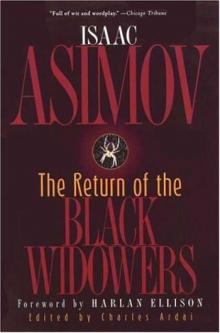 The Return of the Black Widowers
The Return of the Black Widowers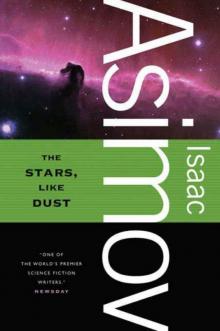 The Stars, Like Dust
The Stars, Like Dust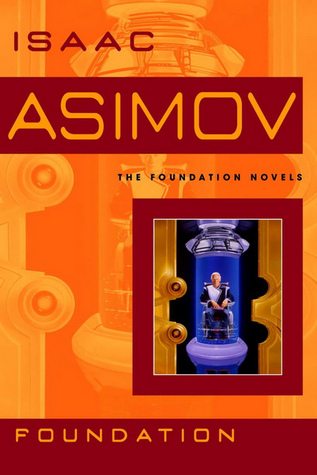 Foundation
Foundation David Starr Space Ranger
David Starr Space Ranger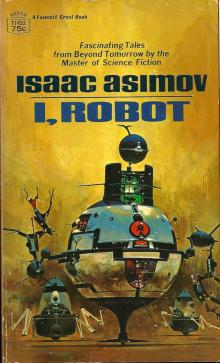 I, Robot
I, Robot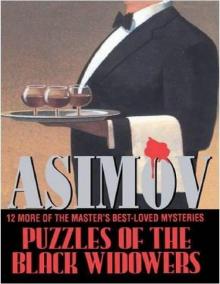 Puzzles of the Black Widowers
Puzzles of the Black Widowers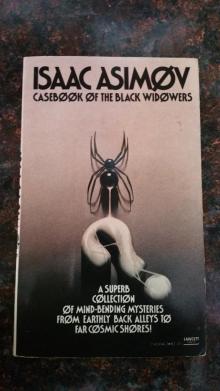 Casebook of the Black Widowers
Casebook of the Black Widowers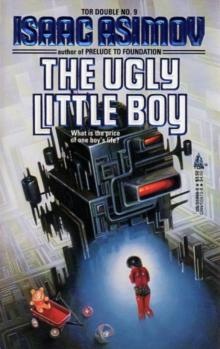 The Ugly Little Boy
The Ugly Little Boy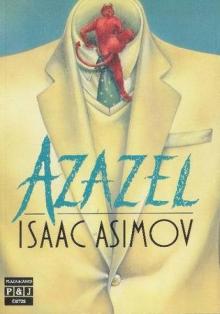 Azazel
Azazel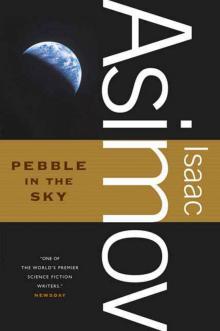 Pebble in the Sky
Pebble in the Sky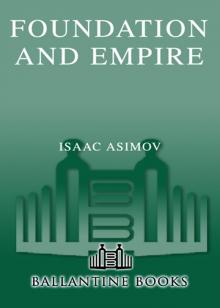 Foundation and Empire
Foundation and Empire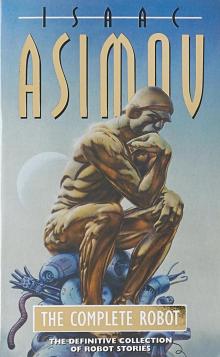 The Complete Robot
The Complete Robot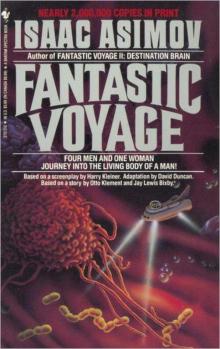 Fantastic Voyage
Fantastic Voyage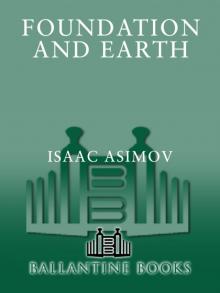 Foundation and Earth
Foundation and Earth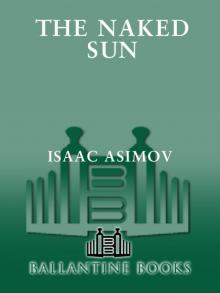 The Naked Sun
The Naked Sun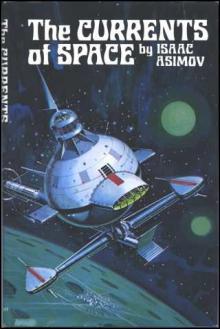 The Currents of Space
The Currents of Space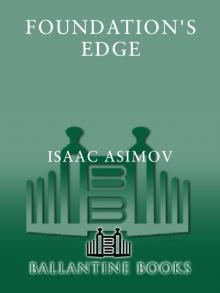 Foundation's Edge
Foundation's Edge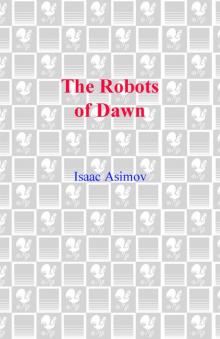 The Robots of Dawn
The Robots of Dawn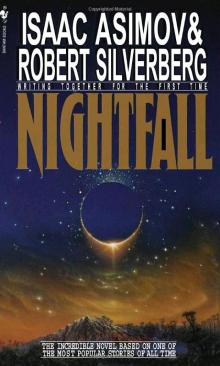 Nightfall
Nightfall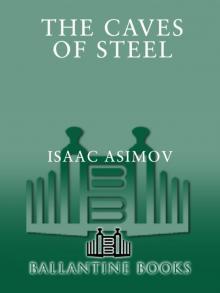 The Caves of Steel
The Caves of Steel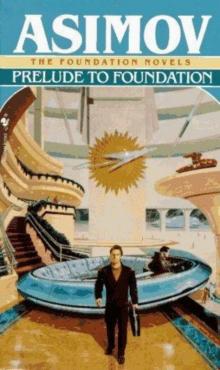 Prelude to Foundation
Prelude to Foundation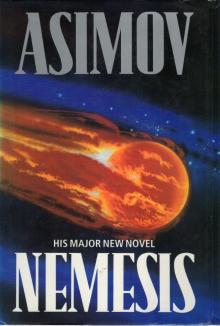 Nemesis
Nemesis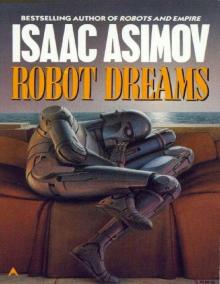 Robot Dreams
Robot Dreams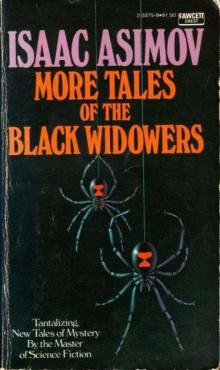 More Tales of the Black Widowers
More Tales of the Black Widowers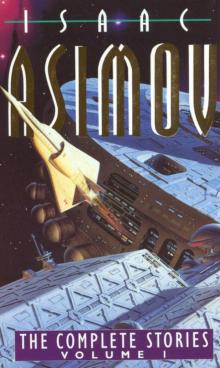 The Complete Stories
The Complete Stories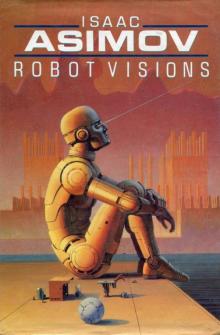 Robot Visions
Robot Visions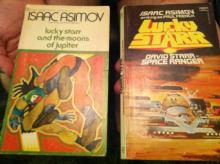 Lucky Starr And The Moons of Jupiter
Lucky Starr And The Moons of Jupiter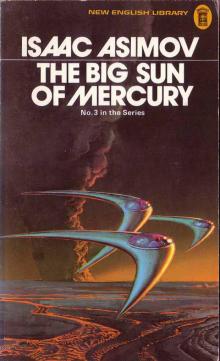 Lucky Starr and the Big Sun of Mercury
Lucky Starr and the Big Sun of Mercury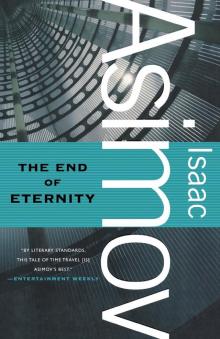 The End of Eternity
The End of Eternity The Bicentennial Man and Other Stories
The Bicentennial Man and Other Stories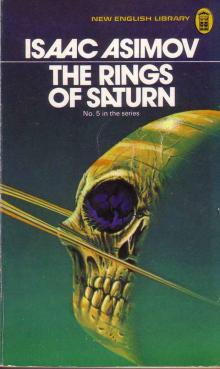 Lucky Starr And The Rings Of Saturn
Lucky Starr And The Rings Of Saturn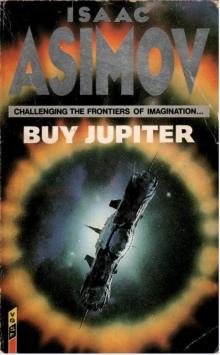 Buy Jupiter and Other Stories
Buy Jupiter and Other Stories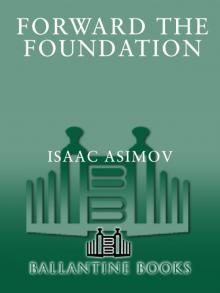 Forward the Foundation
Forward the Foundation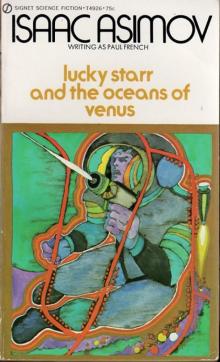 Lucky Starr and the Oceans of Venus
Lucky Starr and the Oceans of Venus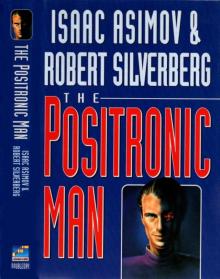 The Positronic Man
The Positronic Man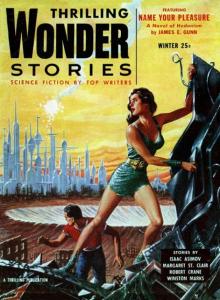 The Portable Star
The Portable Star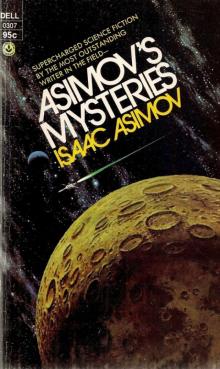 Asimovs Mysteries
Asimovs Mysteries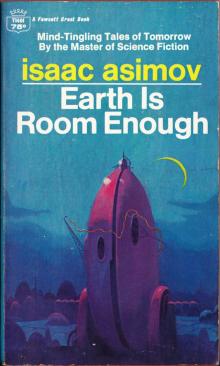 Earth Is Room Enough
Earth Is Room Enough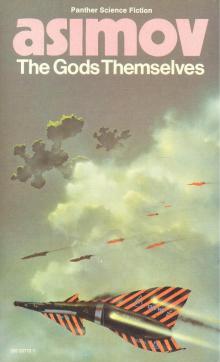 The Gods Themselves
The Gods Themselves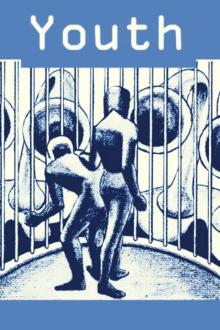 Youth
Youth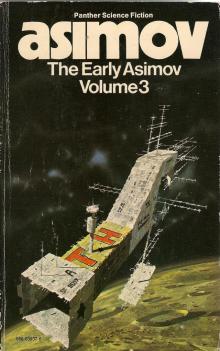 The Early Asimov Volume 3
The Early Asimov Volume 3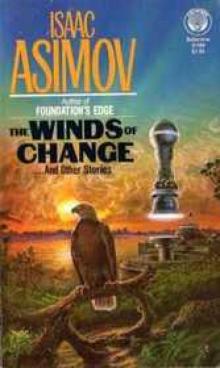 The Winds of Change and Other Stories
The Winds of Change and Other Stories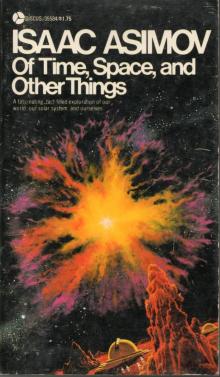 Of Time, Space, and Other Things
Of Time, Space, and Other Things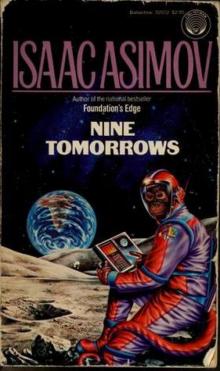 Nine Tomorrows
Nine Tomorrows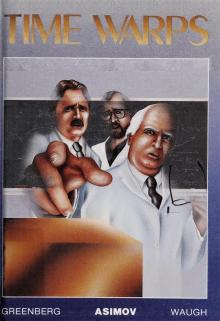 Time Warps
Time Warps Robots and Empire
Robots and Empire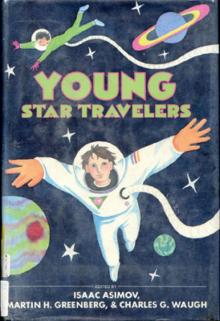 Young Star Travelers
Young Star Travelers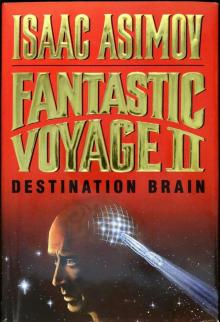 Fantastic Voyage II: Destination Brain
Fantastic Voyage II: Destination Brain Second Foundation
Second Foundation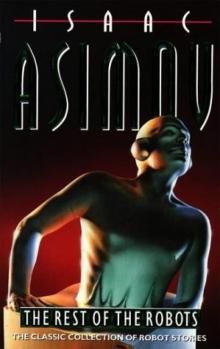 The Rest of the Robots
The Rest of the Robots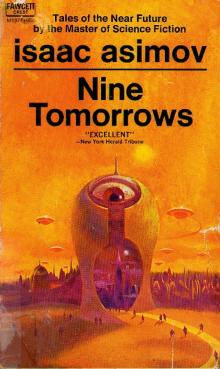 NINE TOMORROWS Tales of the Near Future
NINE TOMORROWS Tales of the Near Future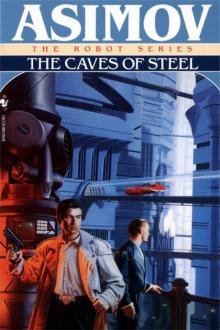 Daneel Olivaw 1 - The Caves of Steel
Daneel Olivaw 1 - The Caves of Steel THE BICENTENNIAL MAN
THE BICENTENNIAL MAN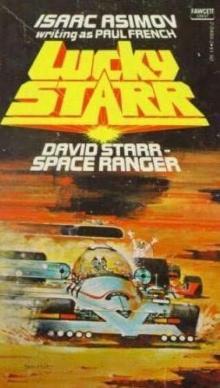 David Starr Space Ranger (lucky starr)
David Starr Space Ranger (lucky starr)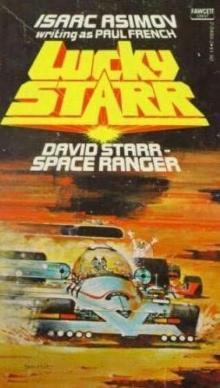 David Starr Space Ranger (ls)
David Starr Space Ranger (ls)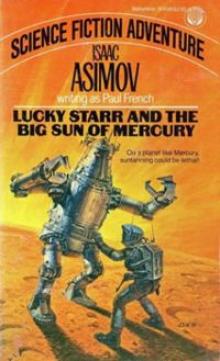 Lucky Starr And The Big Sun Of Mercury ls-4
Lucky Starr And The Big Sun Of Mercury ls-4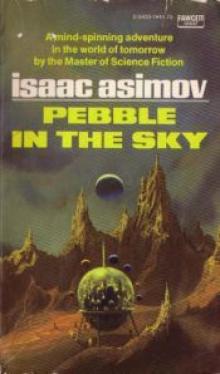 Pebble In The Sky te-1
Pebble In The Sky te-1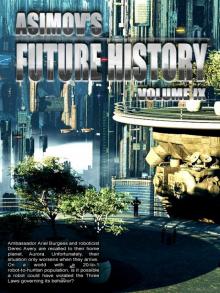 Asimov’s Future History Volume 9
Asimov’s Future History Volume 9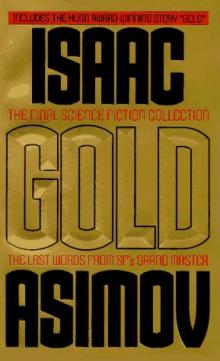 Gold: The Final Science Fiction Collection
Gold: The Final Science Fiction Collection Foundation and Earth f-7
Foundation and Earth f-7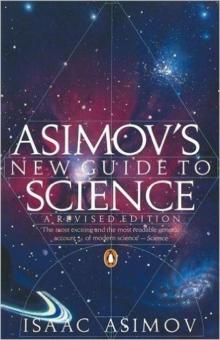 Asimov's New Guide to Science
Asimov's New Guide to Science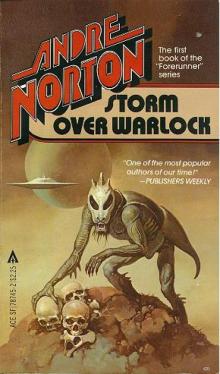 STORM OVER WARLOCK
STORM OVER WARLOCK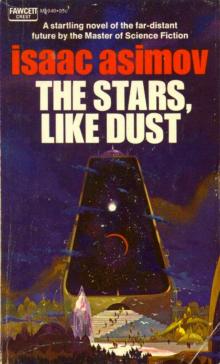 Stars, Like Dust
Stars, Like Dust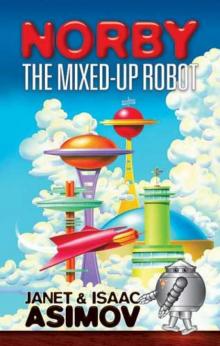 Norby The Mixed-Up Robot
Norby The Mixed-Up Robot Found!
Found!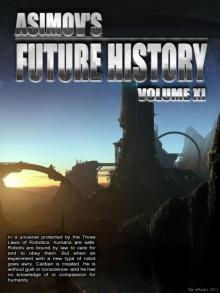 Asimov’s Future History Volume 11
Asimov’s Future History Volume 11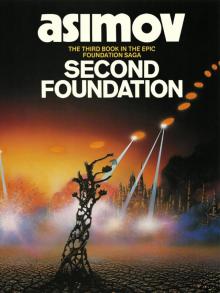 Second Foundation f-5
Second Foundation f-5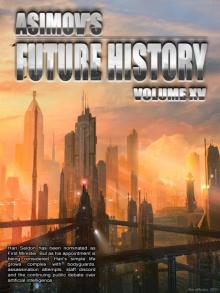 Asimov’s Future History Volume 15
Asimov’s Future History Volume 15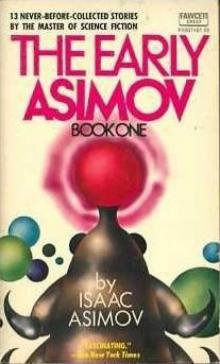 The Early Asimov. Volume 1
The Early Asimov. Volume 1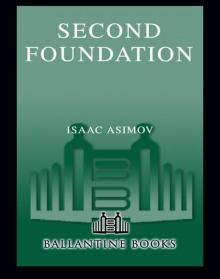 Secound Foundation
Secound Foundation Daneel Olivaw 3 - The Robots of Dawn
Daneel Olivaw 3 - The Robots of Dawn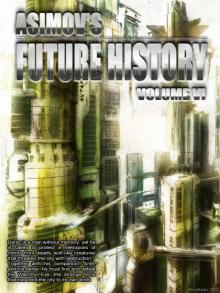 Asimov’s Future History Volume 6
Asimov’s Future History Volume 6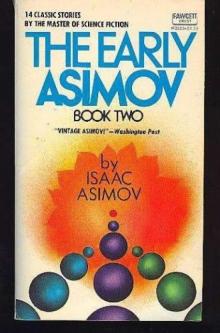 The Early Asimov. Volume 2
The Early Asimov. Volume 2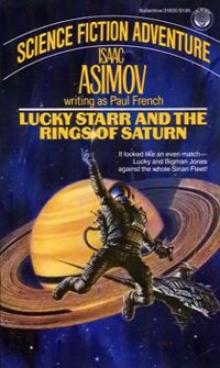 Lucky Starr And The Rings Of Saturn ls-6
Lucky Starr And The Rings Of Saturn ls-6 100 Malicious Little Mysteries
100 Malicious Little Mysteries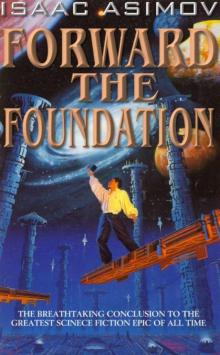 Forward the Foundation f-2
Forward the Foundation f-2 I.Asimov: A Memoir
I.Asimov: A Memoir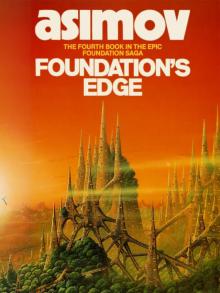 Foundation's Edge f-6
Foundation's Edge f-6 Lucky Starr and the Pirates of the Asteroids ls-2
Lucky Starr and the Pirates of the Asteroids ls-2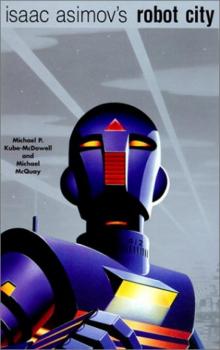 Robot City 1 & 2
Robot City 1 & 2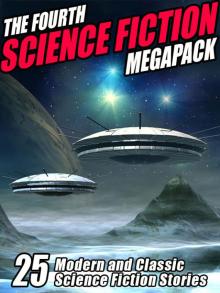 The Fourth Science Fiction Megapack
The Fourth Science Fiction Megapack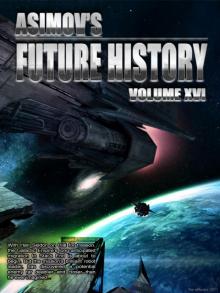 Asimov’s Future History Volume 16
Asimov’s Future History Volume 16 The Dim Rumble
The Dim Rumble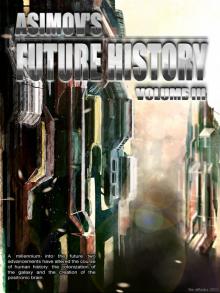 Asimov's Future History Volume 3
Asimov's Future History Volume 3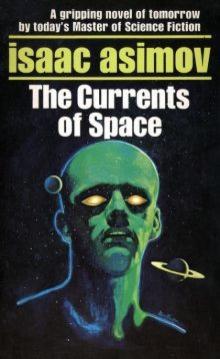 The Currents Of Space te-3
The Currents Of Space te-3 Asimov’s Guide To Shakespear. Volume 1
Asimov’s Guide To Shakespear. Volume 1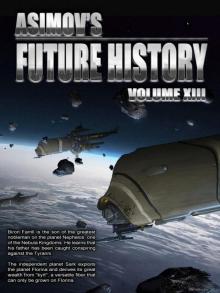 Asimov’s Future History Volume 13
Asimov’s Future History Volume 13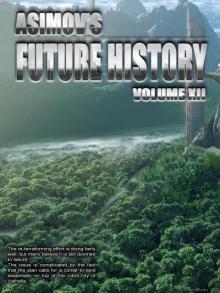 Asimov’s Future History Volume 12
Asimov’s Future History Volume 12 The Secret Sense
The Secret Sense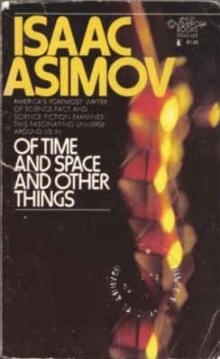 Of Time and Space and Other Things
Of Time and Space and Other Things Norby tnc-2
Norby tnc-2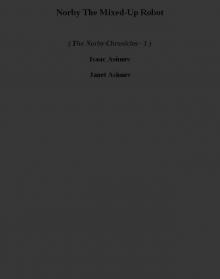 Norby The Mixed-Up Robot tnc-1
Norby The Mixed-Up Robot tnc-1 Misbegotten Missionary
Misbegotten Missionary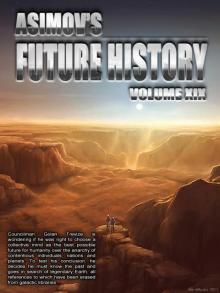 Asimov’s Future History Volume 19
Asimov’s Future History Volume 19 Fantastic Voyage II: Destination Brain fv-2
Fantastic Voyage II: Destination Brain fv-2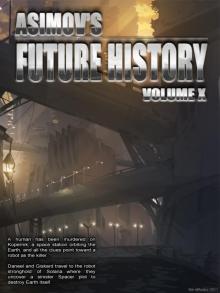 Asimov’s Future History Volume 10
Asimov’s Future History Volume 10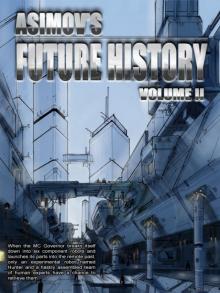 Asimov's Future History Volume 2
Asimov's Future History Volume 2 Feeling of Power
Feeling of Power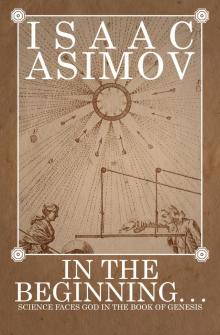 In the Beginning
In the Beginning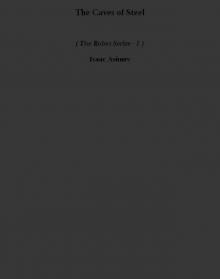 The Caves of Steel trs-1
The Caves of Steel trs-1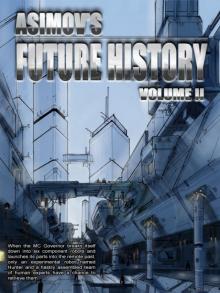 Asimov's Future History Vol 2
Asimov's Future History Vol 2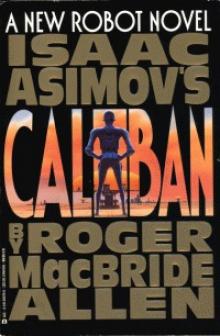 Caliban c-1
Caliban c-1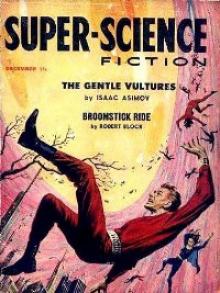 The Gentle Vultures
The Gentle Vultures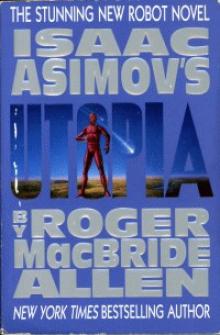 Utopia c-3
Utopia c-3 Prelude to Foundation f-1
Prelude to Foundation f-1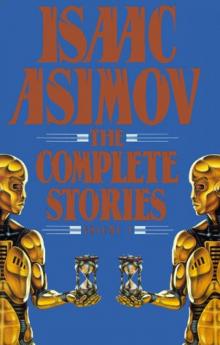 Short Stories Vol.1
Short Stories Vol.1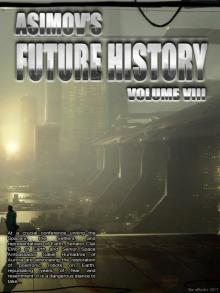 Asimov’s Future History Volume 8
Asimov’s Future History Volume 8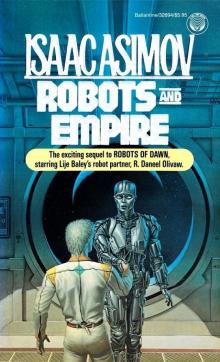 Daneel Olivaw 4 - Robots and Empire
Daneel Olivaw 4 - Robots and Empire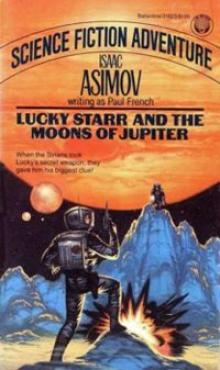 Lucky Starr The And The Moons of Jupiter ls-5
Lucky Starr The And The Moons of Jupiter ls-5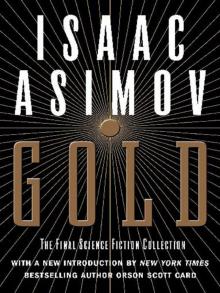 Gold
Gold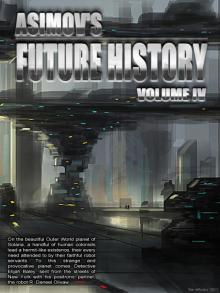 Asimov’s Future History Volume 4
Asimov’s Future History Volume 4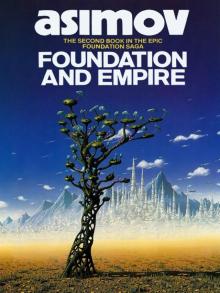 Foundation and Empire f-4
Foundation and Empire f-4 Potential
Potential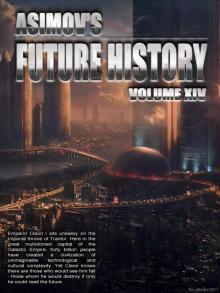 Asimov’s Future History Volume 14
Asimov’s Future History Volume 14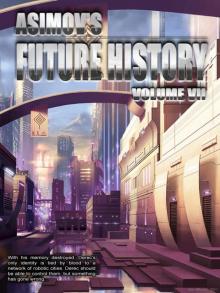 Asimov’s Future History Volume 7
Asimov’s Future History Volume 7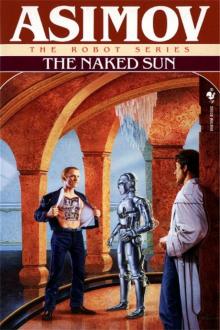 Daneel Olivaw 2 - The Naked Sun
Daneel Olivaw 2 - The Naked Sun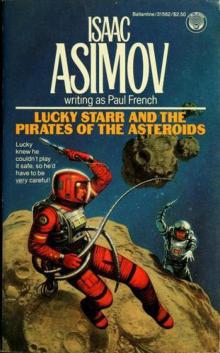 Lucky Starr and the Pirates of the Asteroids
Lucky Starr and the Pirates of the Asteroids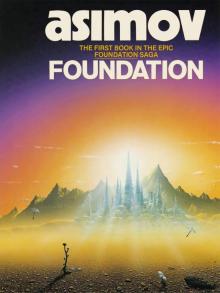 Foundation f-3
Foundation f-3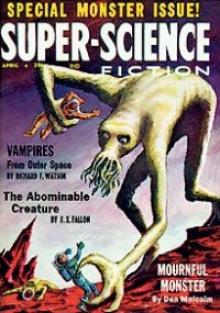 All the Troubles of the World
All the Troubles of the World Cleon the Emperor
Cleon the Emperor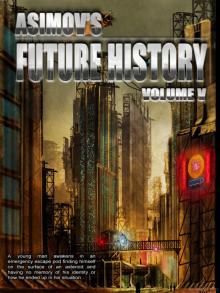 Asimov's Future History Volume 5
Asimov's Future History Volume 5 Asimov’s Future History Volume 20
Asimov’s Future History Volume 20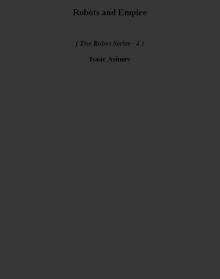 Robots and Empire trs-4
Robots and Empire trs-4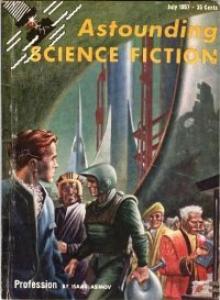 Profession
Profession It's Been a Good Life
It's Been a Good Life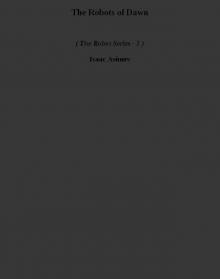 The Robots of Dawn trs-3
The Robots of Dawn trs-3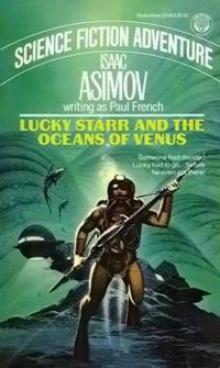 Lucky Starr And The Oceanf Of Venus ls-3
Lucky Starr And The Oceanf Of Venus ls-3 The Naked Sun trs-2
The Naked Sun trs-2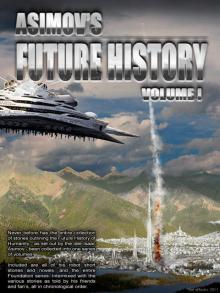 Asimov's Future History Volume 1
Asimov's Future History Volume 1